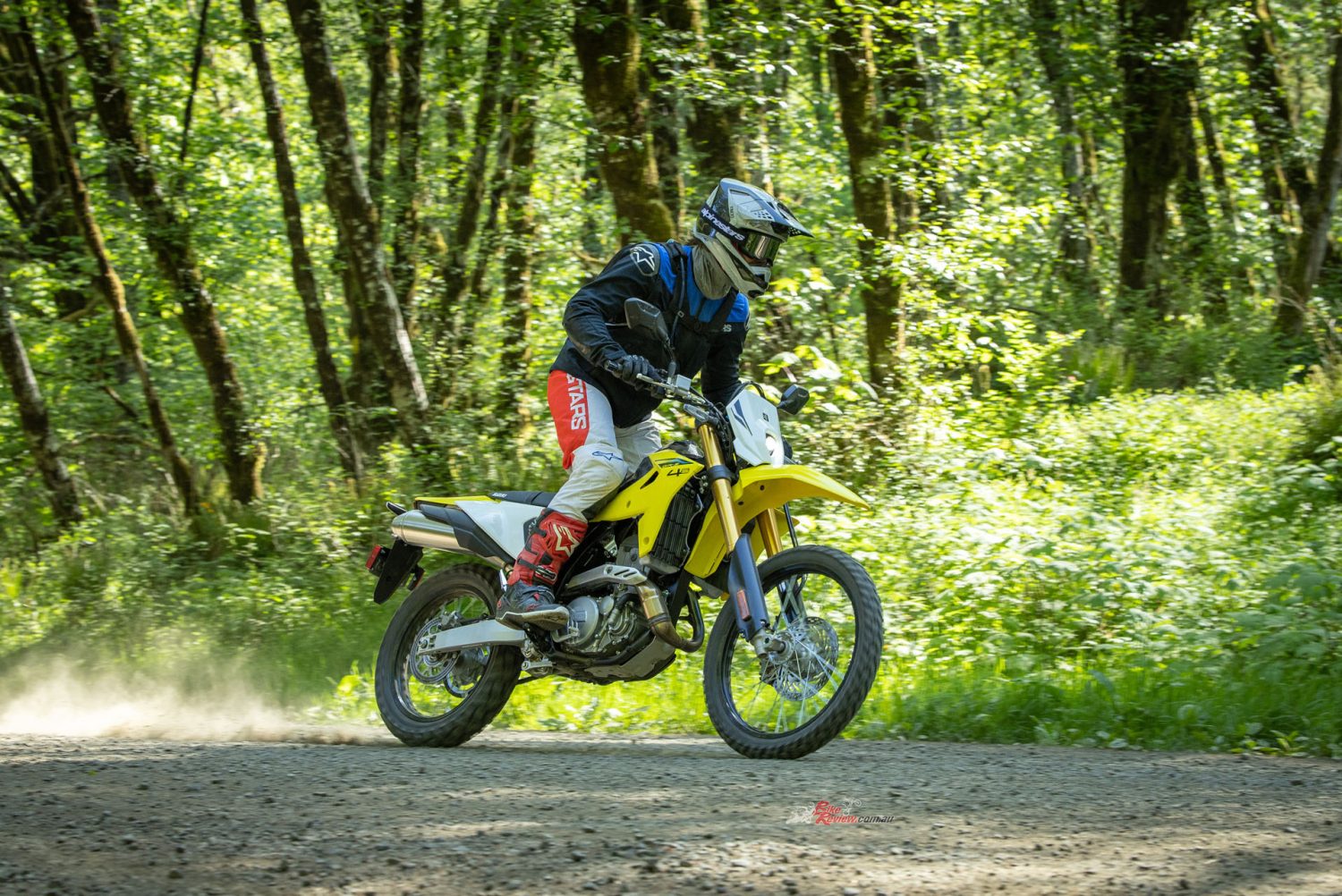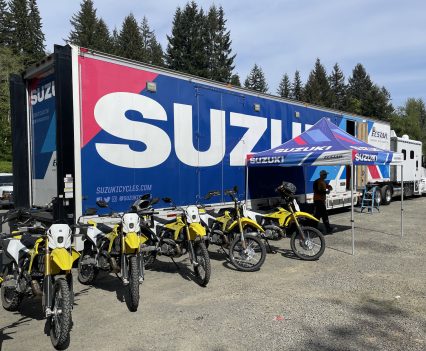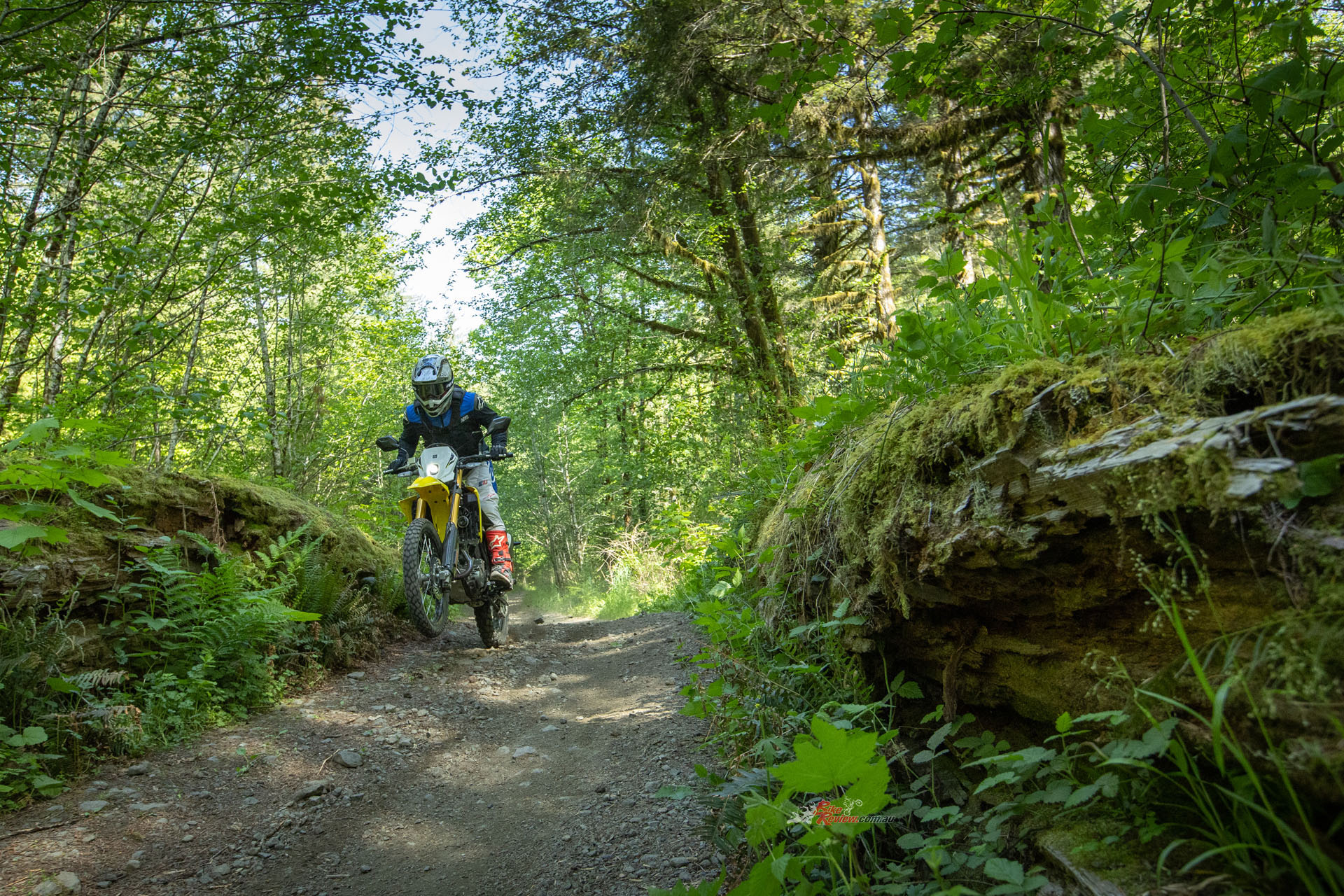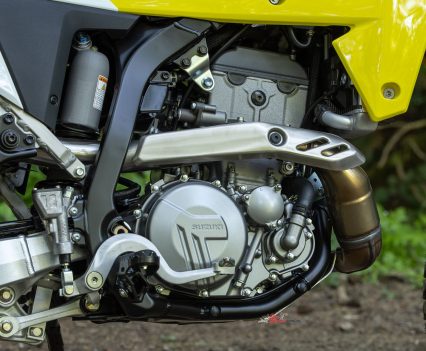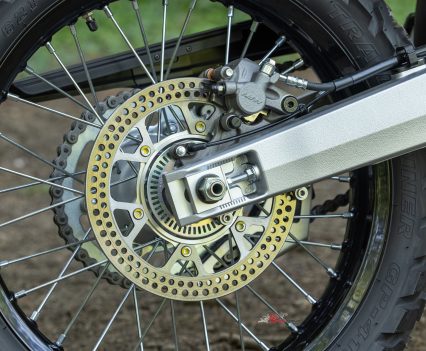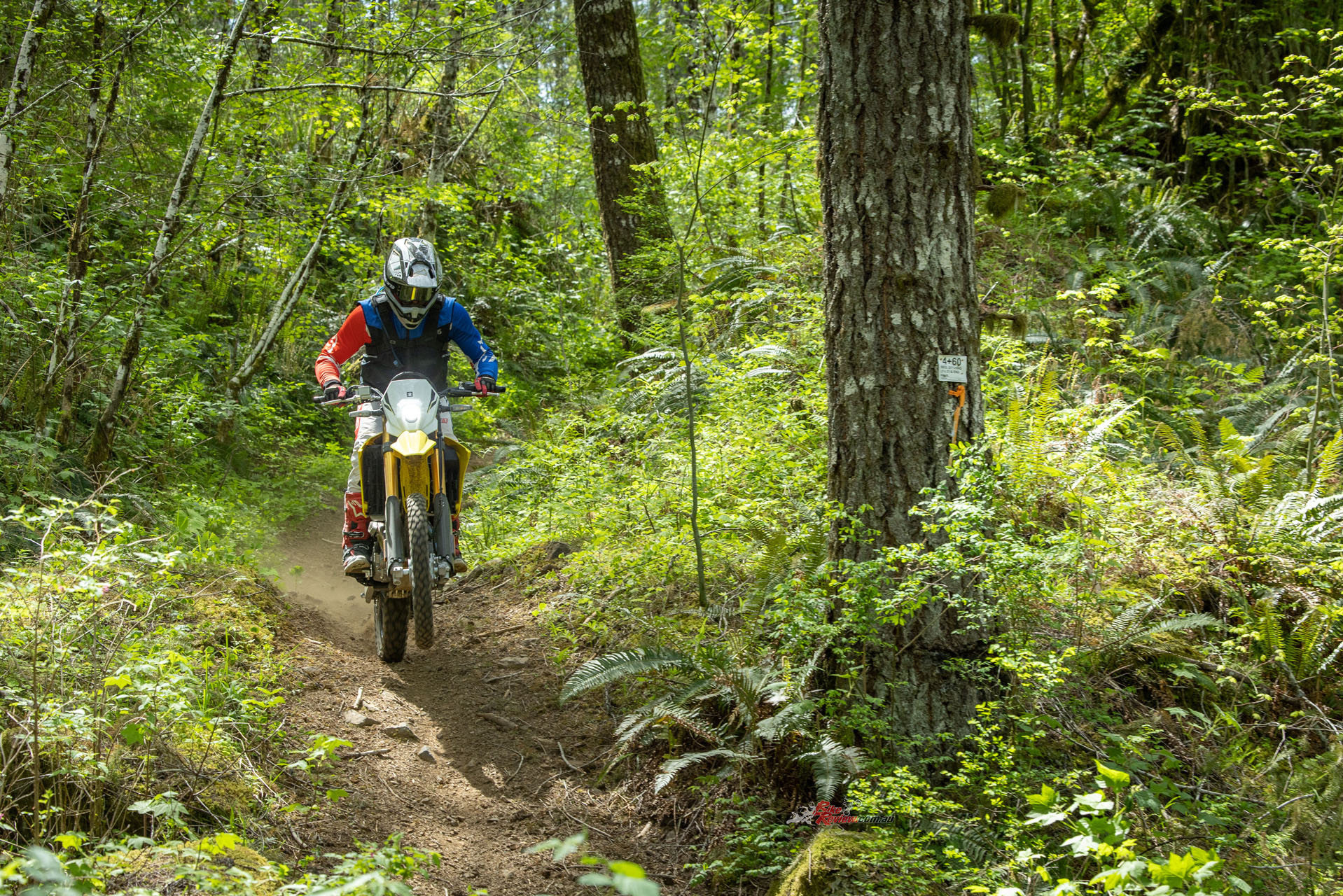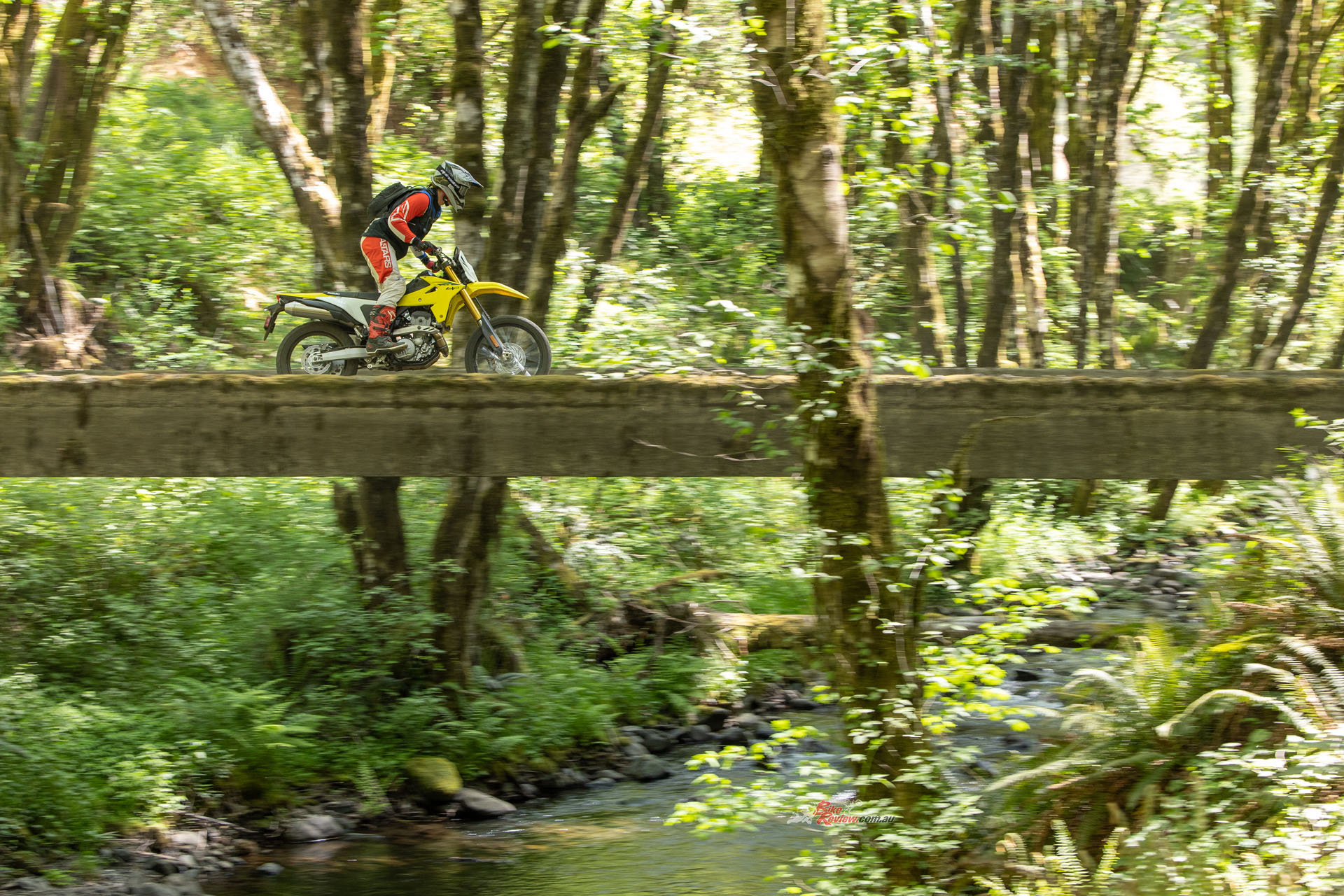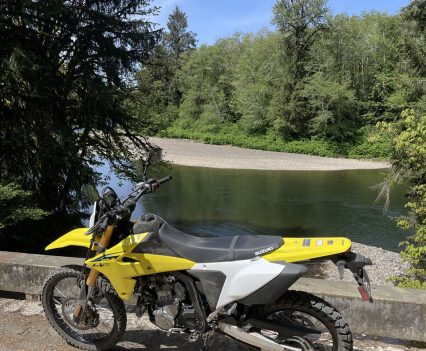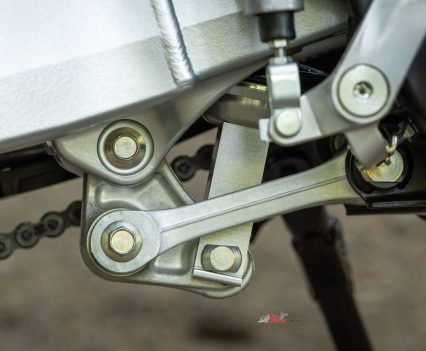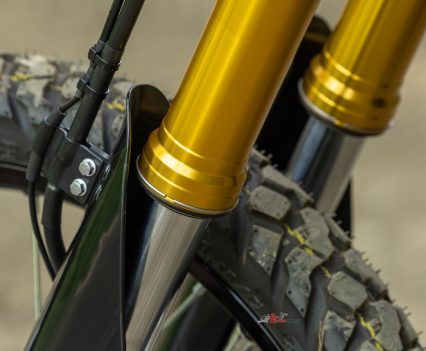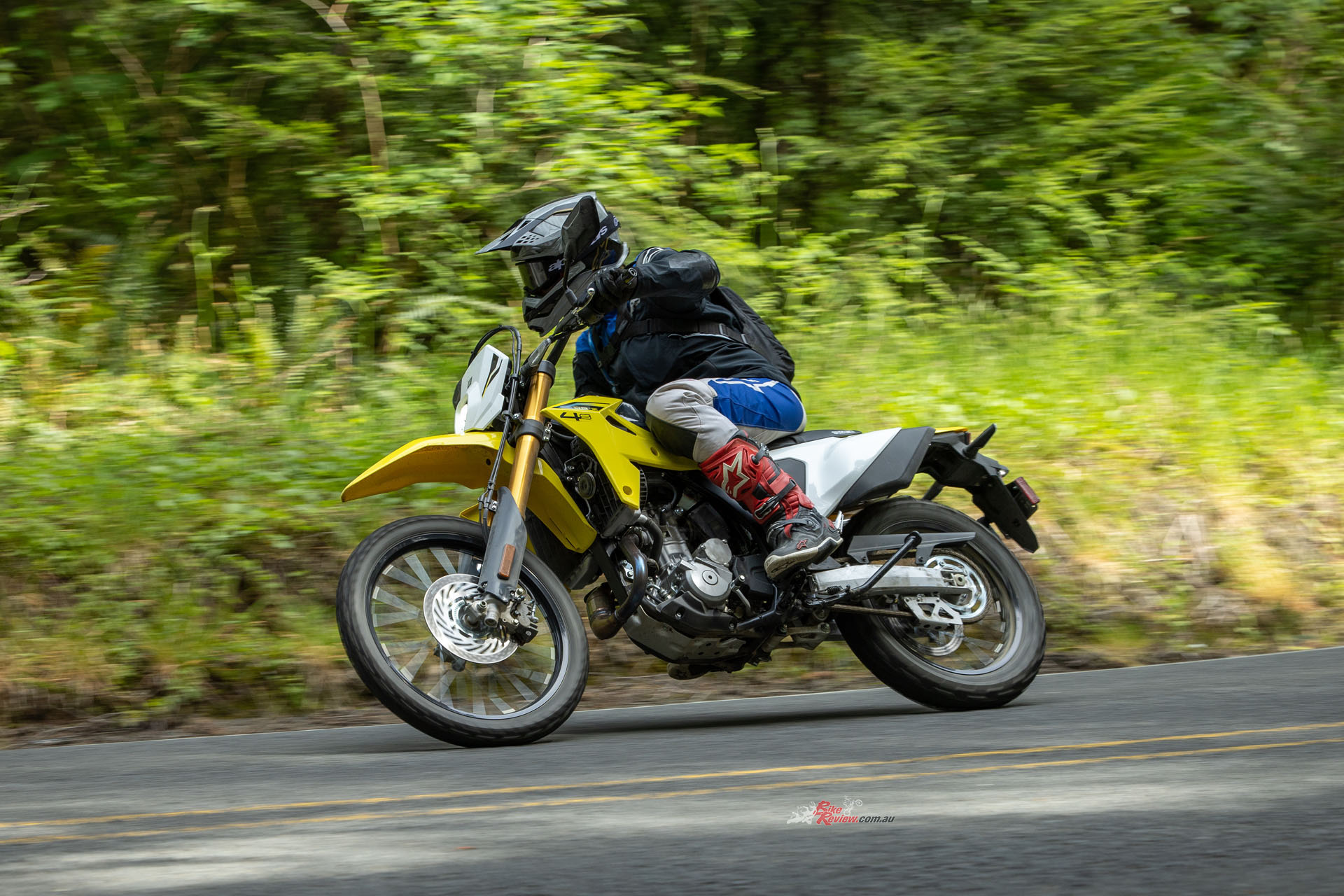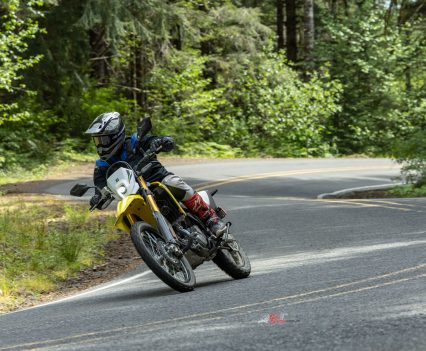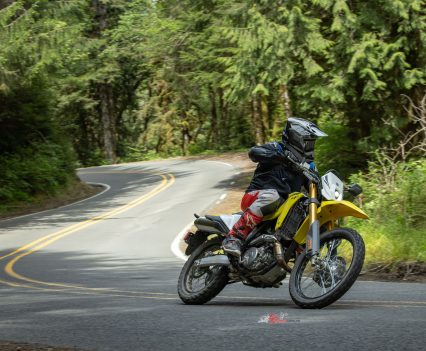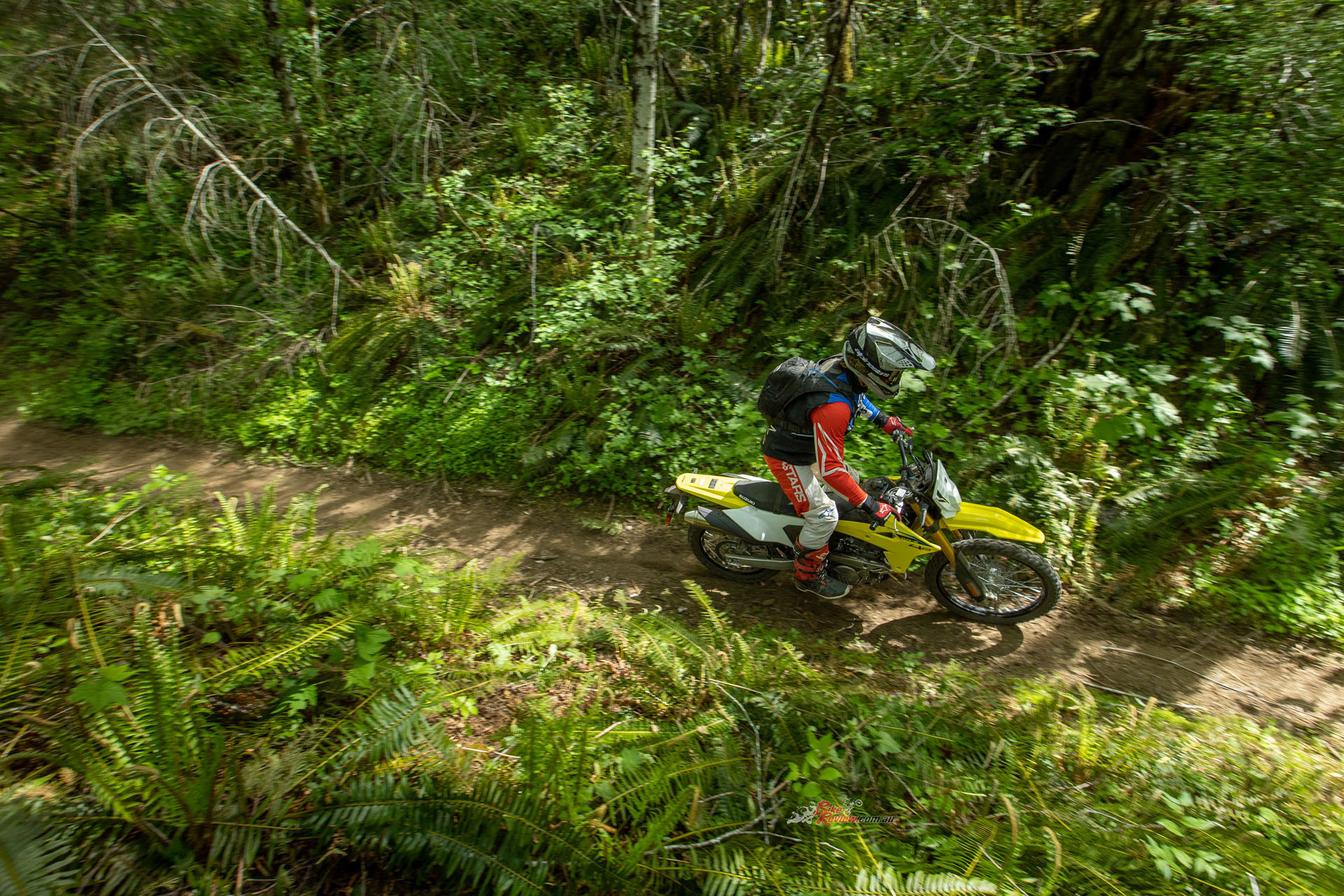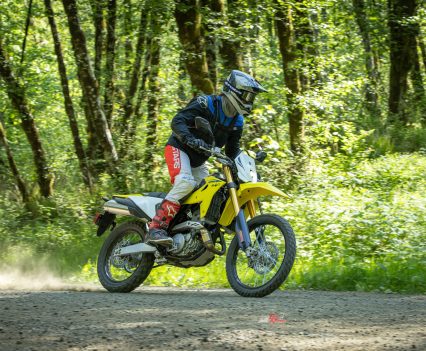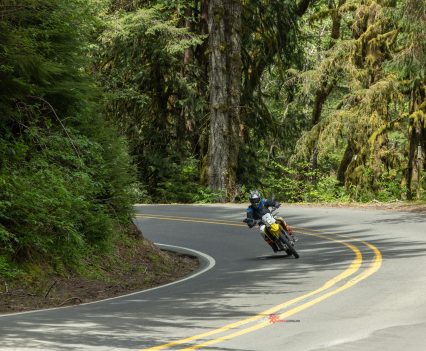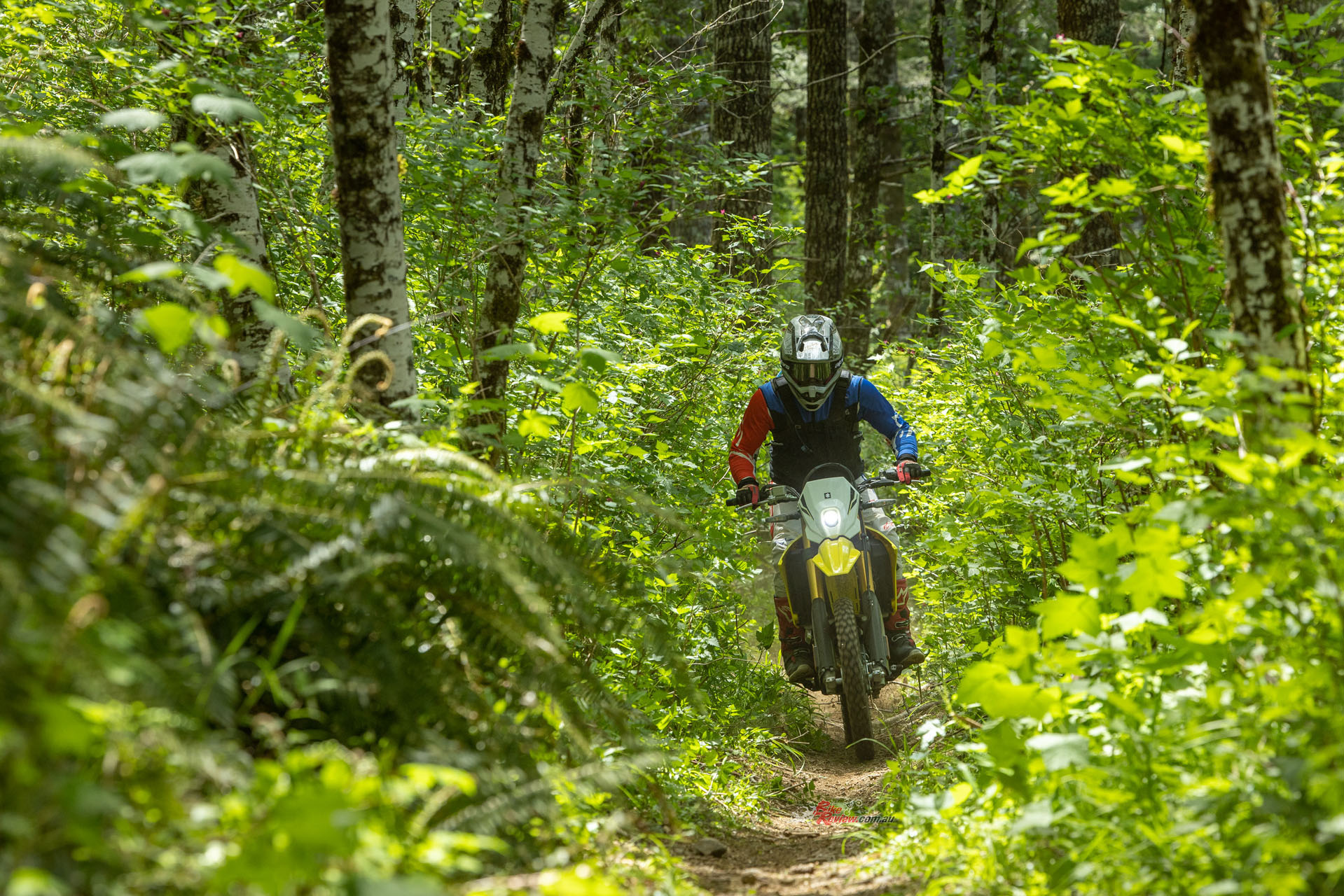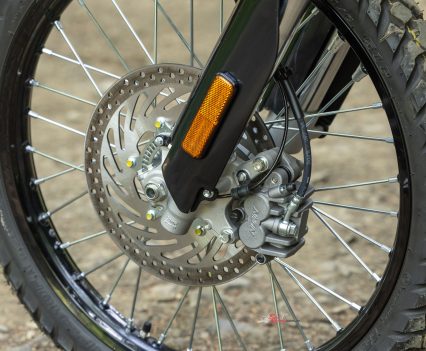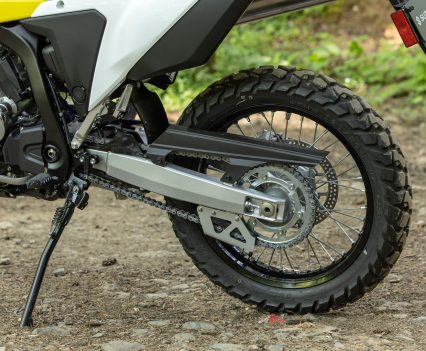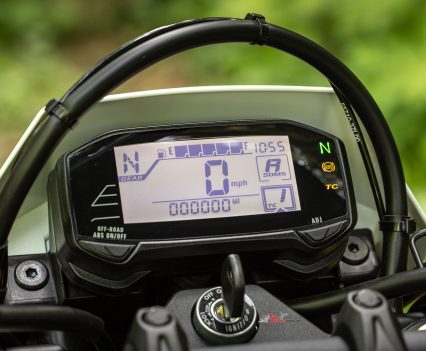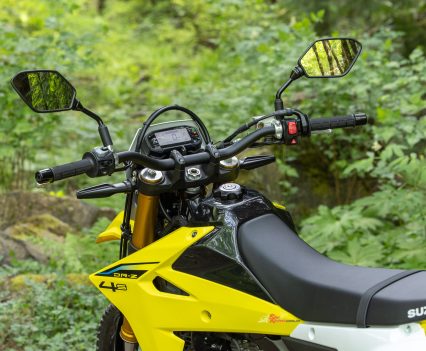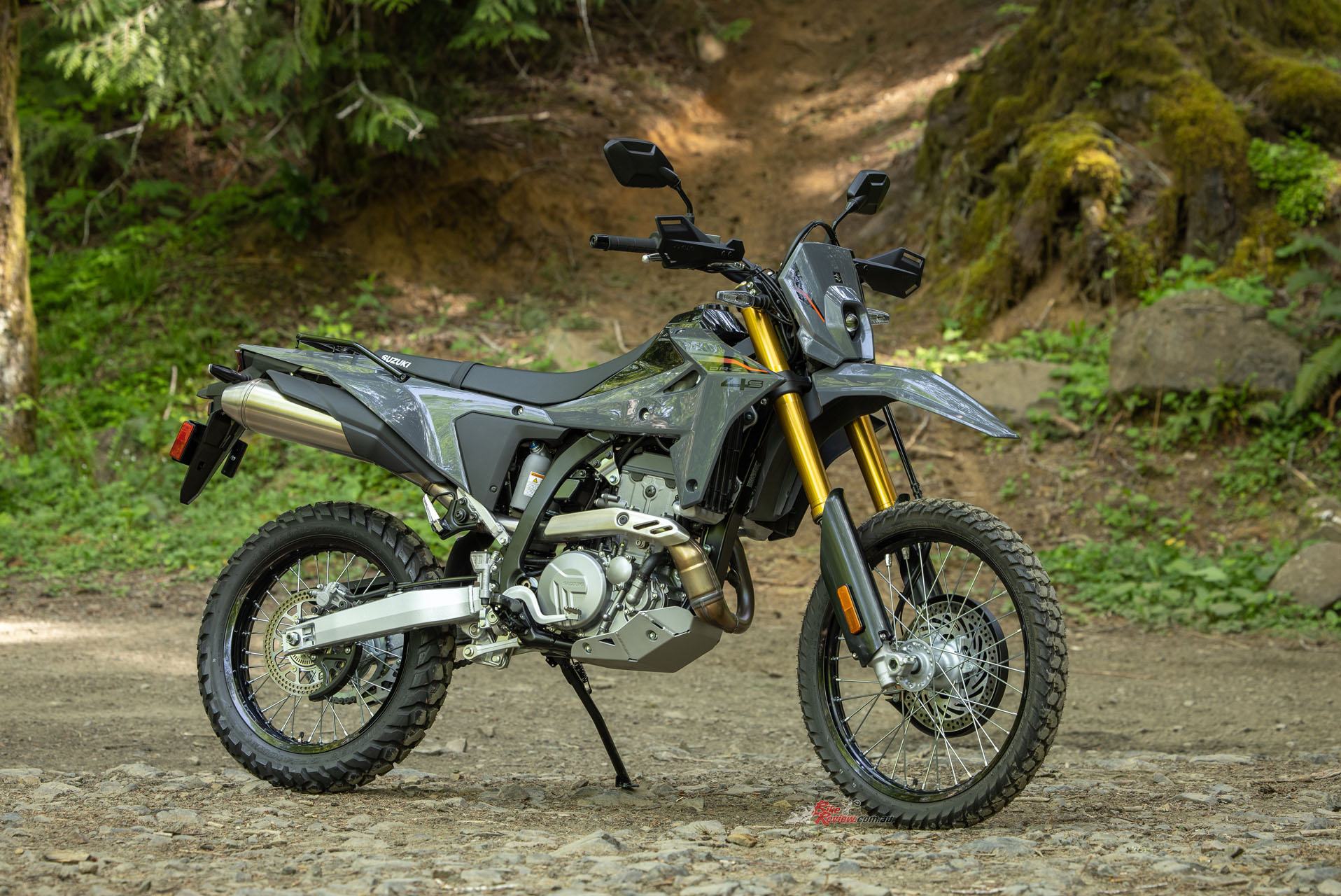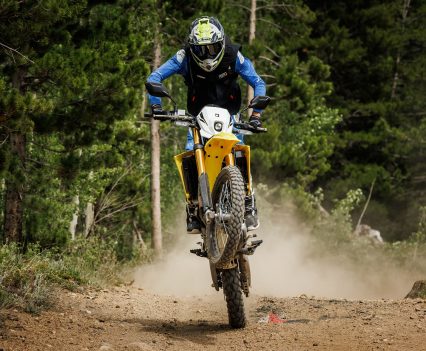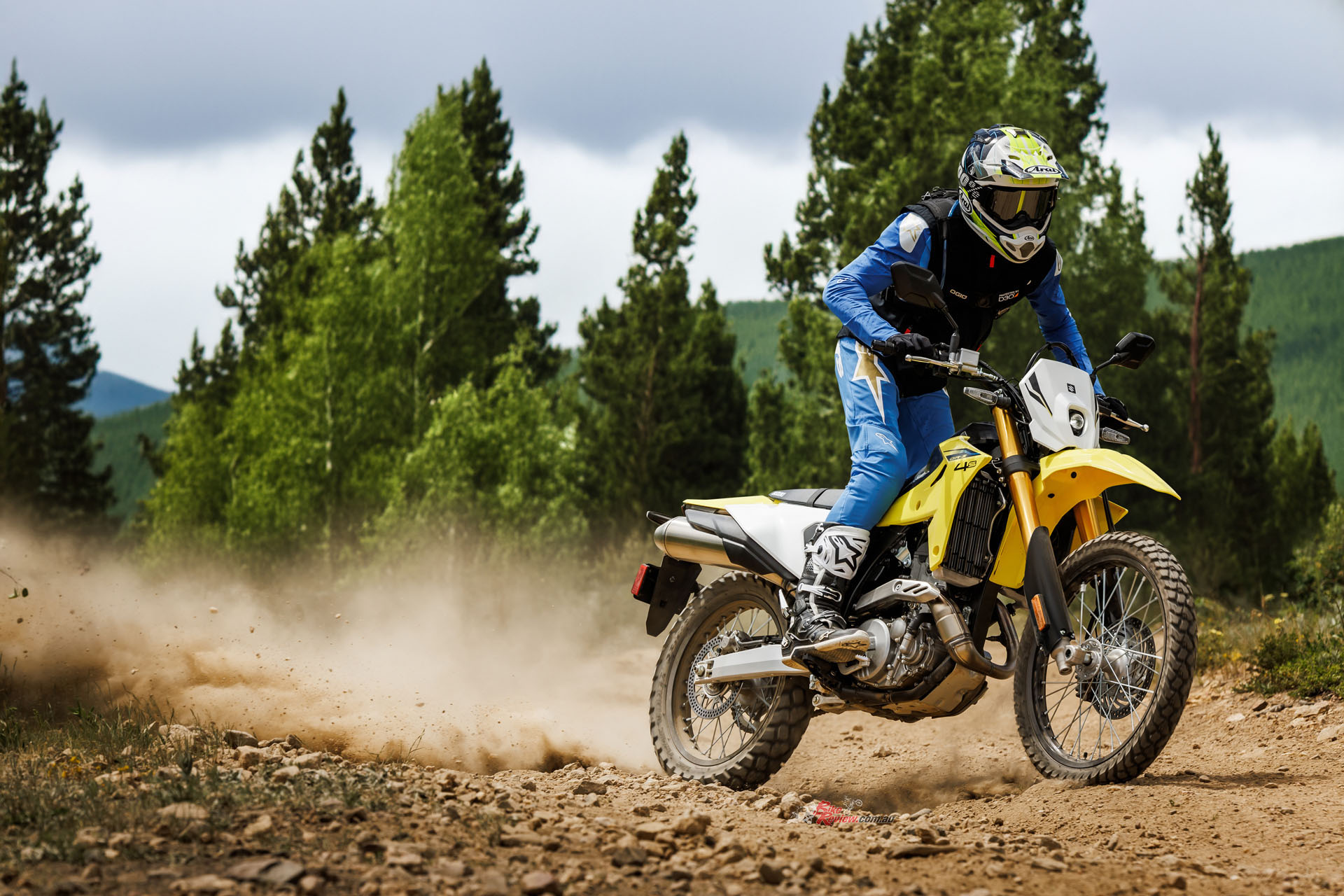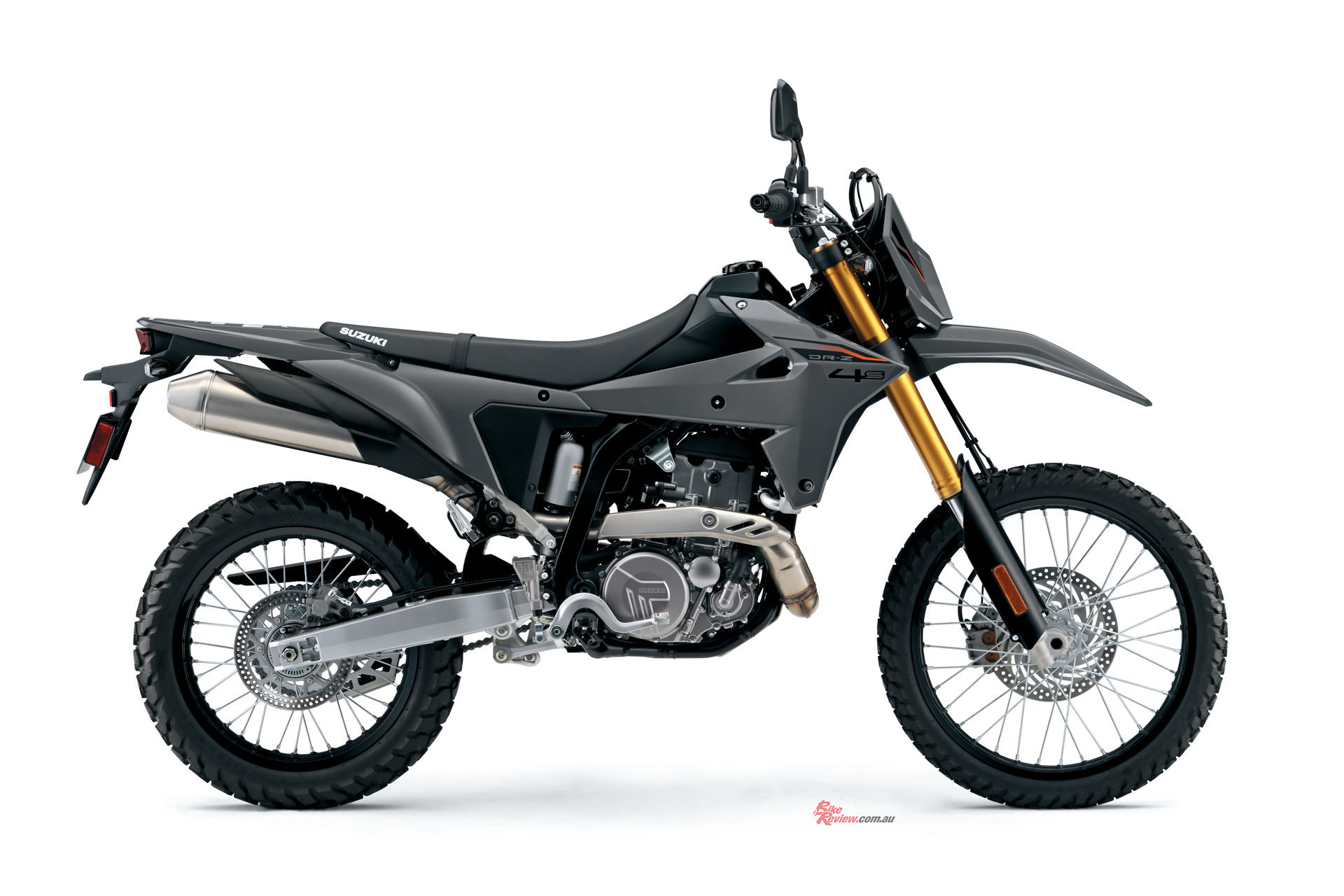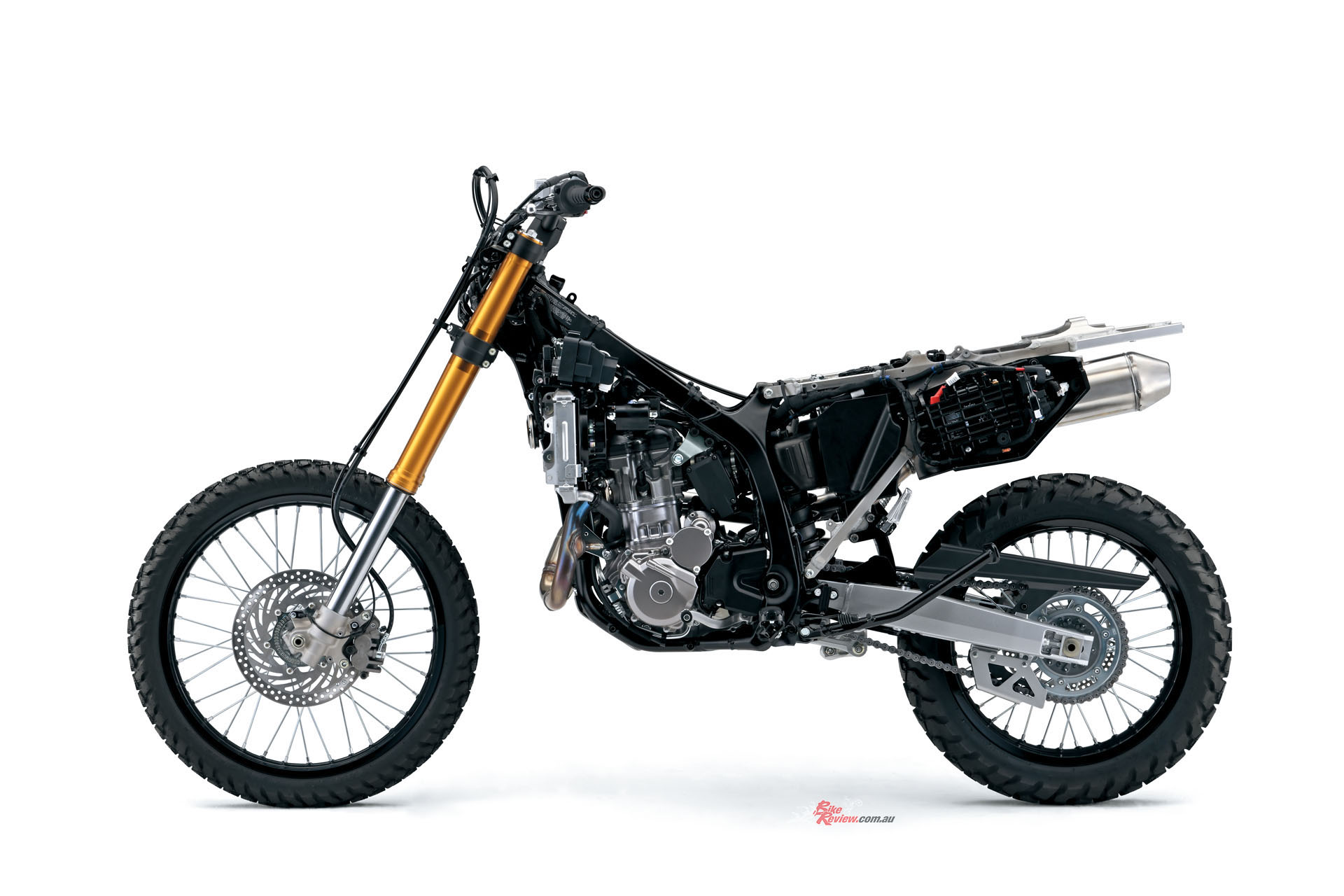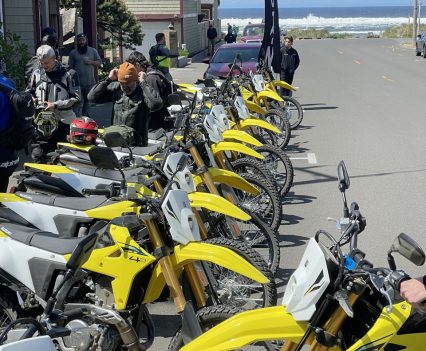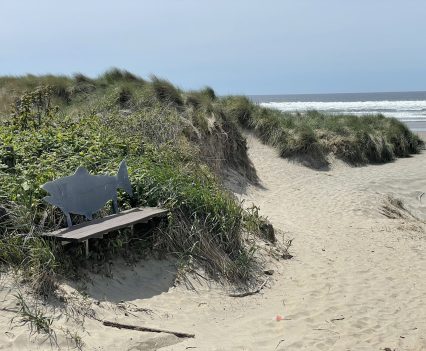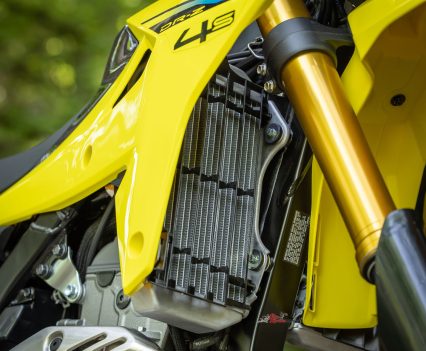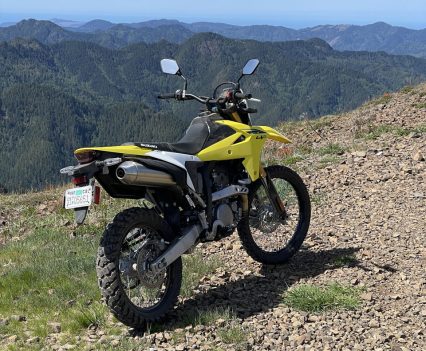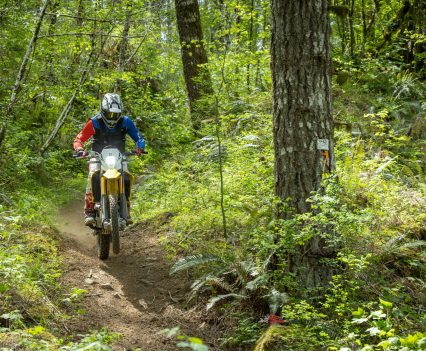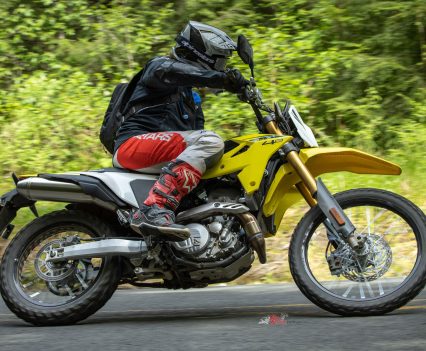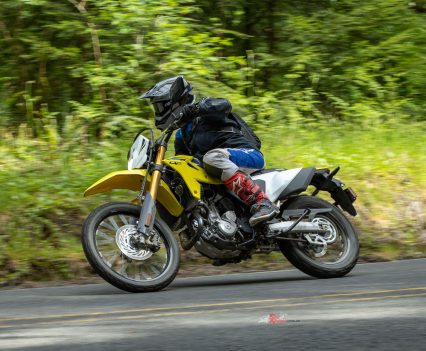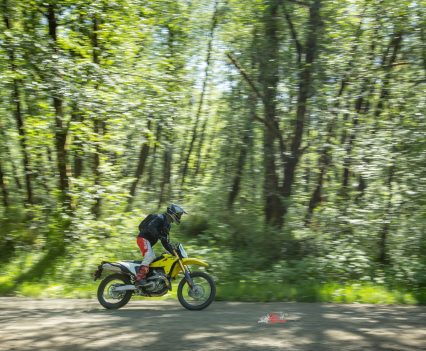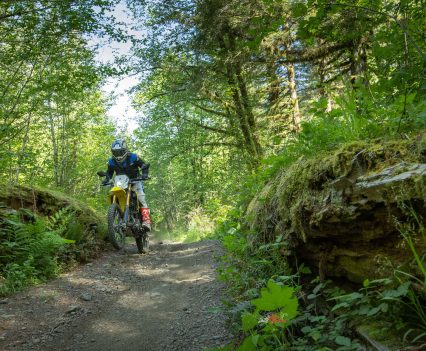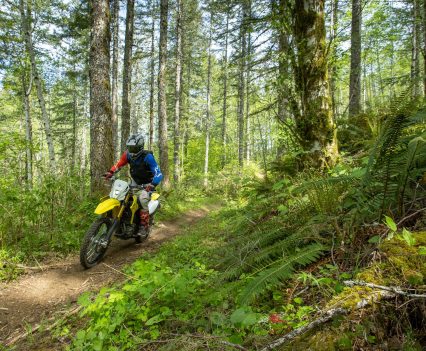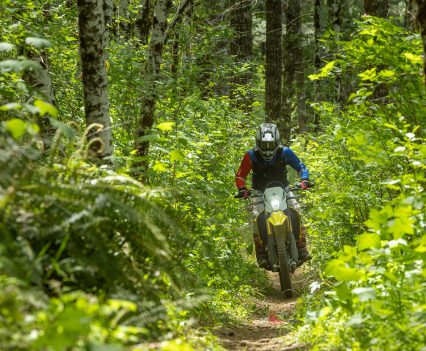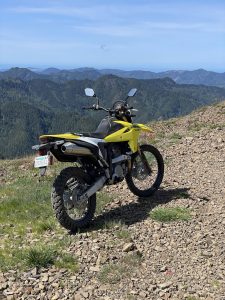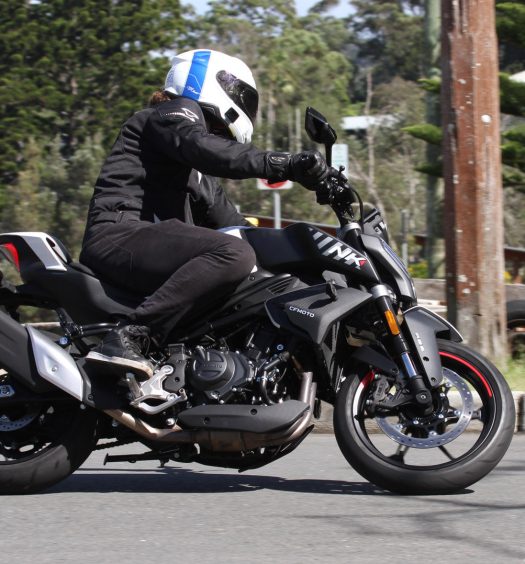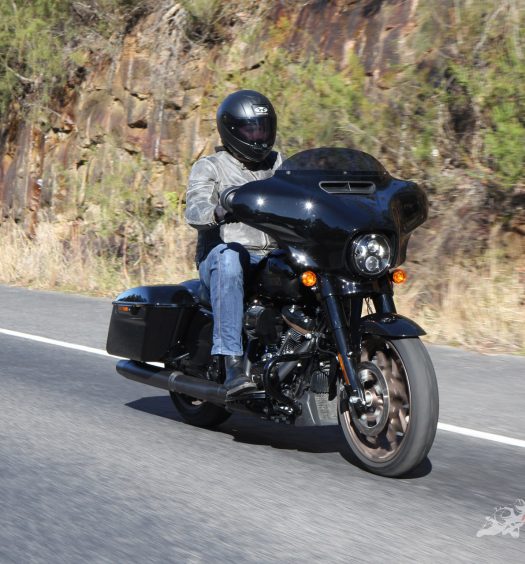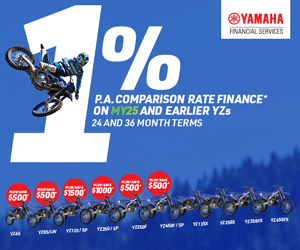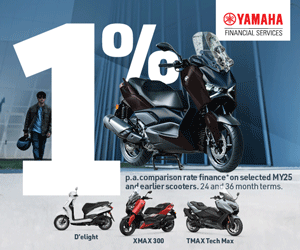The 2025 DR-Z4S brings fuel injection, switchable engine maps, traction control, ABS and a raft of chassis and suspension upgrades to a much-loved Suzuki stalwart. Photos: Kevin Wing
The iconic Suzuki DR-Z400 has finally received a long-awaited overhaul. Now Euro-5+ compliant and featuring a useful suite of practical electronic rider aids, the all-new DR-Z4S promises to carry the legacy of the beloved middleweight thumper into a new era…
When it comes to stalwart designs which have stood the test of time longer than most, a handful of bikes come to mind. As motorcycle technology has advanced over the years, some manufacturers have stuck with the “if it ain’t broke, don’t fix it” approach, and a perfect example of this is Suzuki’s DR-Z400.
Since its introduction in 2000, arguably little to no major updates were made to the DR-Z400 over its 25-year lifespan when compared to many other machines in the class – until now. A testament to the solid underpinnings of the bike is the fact the Australian military opted to use the DR-Z400E, it said, “to provide mobility and sustainability while undertaking activities in low and medium intensity conflicts”.
The 2025 DR-Z4S had a very high bar to clear in terms of replacing its predecessor and, after spending some decent time aboard it at the recent world launch, it has vaulted over it with ease. While this do-all middleweight thumper has earned a strong following in Australia for more than two decades, strict emission laws have prevented its sale in Europe since 2008. Now, thanks to twin catalytic converters tucked into the exhaust system, it’s Euro 5+ compliant and officially back on the world stage.
Far more than a name change, virtually everything about the 2025 DR-Z4S is entirely new, marking the biggest update we’ve seen since its release. At first glance, it’s really clear this is a new model. A slimmer design showcases a more modern look and feel. Beneath the exterior bodywork hides a redesigned semi-double cradle steel frame, and both the aluminum sub-frame and swingarm have been redesigned as well. The new swingarm design alone is calculated to add 9.3 per cent additional torsional rigidity, but did not give the bike a harsh or overly-stiff feel.
The list of updates goes on; the forks have been changed from a conventional telescopic unit to an inverted design with 280mm of travel, while the rear shock boasts 295mm of travel and now connects to a new Pro-Link rear linkage – a rising-rate system that helps provide a more progressive action. The updated suspension results in 300mm of ground clearance and a not-insignificant 935mm seat height, the footpegs are now a wider than before.
The updated suspension results in 300mm of ground clearance…
Both brake discs each end benefit from an extra 20mm diameter, taking them out to 270mm on the front and 240mm at the rear. The airbox shape has also been redesigned and now features an additional intake behind the seat, the headlight is now an LED unit, and a five per cent increase in fuel efficiency means the 8.7-litre tank has a claimed 250km range.
The changes to the ageing engine are not before time, either. The 398cc single-cylinder unit is now fuel injected, producing 27.6kW [37.5hp] of power at 8000rpm and 37Nm [27.3ft-lbs] of torque at 6500rpm. It also runs a lighter piston than before with titanium intake valves and hollow sodium-filled exhaust valves. The diameter of the throttle-body has gone from 36mm in the previous version to 42mm with a 10-hole injector for 2025, resulting in less hesitation under acceleration.
A new twin-spark system results in a more efficient fuel burn, too, and coupled with an increase in torque throughout the rev range, the new DR-Z4S is difficult to stall, even when throwing around the entire 151kg package in tight trails through the forest.
Power delivery from the updated engine is is now more efficient thanks to Suzuki’s so-called ‘Clutch Assist System’. Using a combination of assist and slipper cams inside the clutch, operating forces are reduced by a claimed 25 per cent. The practical realisation of this on the trail was that the bike could often be shifted almost like it had a quick-shifter, even in the most technical trail situations of this test.
When using the the clutch lever as intended, the feel is somewhat vague, with an engagement point that lacks the precision you might expect from other bikes. That said, the engine’s broad and forgiving torque range meant I rarely needed to use the clutch to manage power delivery – far less than I anticipated, especially in the really tight and technical sections.
For all this praise, one glaring omission will probably stand out to some riders and that’s the five-speed transmission. While it’s an amazingly smooth gearbox, the lack of a sixth gear does feel a little dated. That said, for this test – though probably not a coincidence – there was no need for one. Twisty pavement, tight narrow trails and loose-gravel fire roads were all well-served by the torquey engine and available gearing.
“Twisty pavement, tight narrow trails and loose-gravel fire roads were all well-served by the torquey engine”…
I didn’t have an opportunity to test the outright top speed, but the bike was still pulling well above 110km/h. Things start to get a bit buzzy above 105km/h, so freeway use is probably best kept to transport sections between your favourite trails and back roads.
Of course we can’t talk about updates without talking about electronics – yes, on a DR-Z! While the conventional LCD display hasn’t made way for a TFT unit yet, it is super clear to see, logically arranged and intuitive to use. And simple handlebar switches allow you to control most of the Suzuki Intelligent Ride System (S.I.R.S). This system has three levels of power delivery (A, B and C), four levels of traction control (1, 2, G and Off) and three levels of ABS (On, Front on/Rear off and Off). Importantly, all three systems – power, traction control ABS – feel seamlessly integrated.
All three power modes achieve the same peak power level, the difference is how it gets there. Starting with the most mellow, C, which could be thought of as ‘comfort’ mode. Power rolls on gently at first, then ramps up as you get deeper into the throttle. Switching to B, the delivery becomes very linear, allowing the throttle to feel like it has the same response regardless of how hard you’re twisting it. Selecting A offers the most precise and connected feel, providing snappy power delivery throughout the initial portion of the throttle opening and becoming less aggressive as you approach peak power.
Traction control levels of 1 and 2 are best suited for road riding, while G and Off are for the dirt
Traction control levels of 1 and 2 are best suited for road riding, while G and Off are for the dirt. The DR-Z4S’s G mode – or gravel mode – is perhaps one of the best applications of this idea I’ve tried so far. On steep and loose climbs, the only time I felt the system intervening was when I tried to take over throttle modulation duties. By simply holding the throttle open steadily, the computer would find traction in a behind-the-scenes way that was more precise than any bike in this class I can think of.
Even the ABS was a no-less surprising experience. At one point, I encountered the perfect testing situation for a system like this; riding downhill at a decent clip on a relatively steep and very loose gravel road and I’m presented with an unexpected sharp curve. With ABS set to front on/rear off, I squeezed the front brake a bit harder than I normally would and mostly locked up the rear. The bike scrubbed off speed much faster than I would have expected, with zero lever pump or front wheel chatter. It’s important to note, all this was experienced while running the stock 50/50 profile IRC Trail Winner GP-410 tyres, too.
To get a feel for how the rider aids modify the engine and braking experience, I spent a healthy portion of my time on the bike riding with both traction control and ABS switched off. Power hits very quickly in the A map, and it’s pretty easy to break traction if you’re not on your toes in this mode. Fortunately, the new fly-by-wire throttle is extremely precise and provides a super connected feel to the bike which you quickly get addicted to.
The larger discs on the new DR-Z4S mean braking happens very quickly. By way of reference, the intense stopping power of the 2025 model reminded me of a time when I switched to Shimano four-piston brake calipers for mountain bike races. Similar to that MTB setup, the brakes on the new DR-Z4S at first felt like on/off switches, especially the rear. After a few kays of getting used to them, it became just a much more precise form of modulation, and one which the ABS takes advantage of.
In the mix of mostly wide fire roads, some narrow trails and twisty blacktop on the first day of this test, the B map quickly became my go-to selection. Outside of tighter narrow trails, the more linear feel of this map made for a more relaxed ride without sacrificing any power. For my tastes, these roads and trails were way too fun for the comparatively docile C map, but I could see an application for that on some rides and in some conditions.
“The cornering speeds we were taking were beyond what I would trust most ABS systems with in similar conditions”…
Activating traction control and ABS reveals how well integrated they both are with the available throttle maps. For day one, the combination of the B map, traction control set to G and ABS set to front on/rear off could have potentially been the all-day choice if I had to pick one arrangement to work with. In the tighter trails of day two, the A map’s precise feel and switching between traction control either off or in G mode made for a fun dance through the picturesque forests of Northern Oregon’s Tillamook Mountains. And the fact that you can easily switch both the fuel map and traction control modes on-the-fly makes testing the performance of each – and everyday ease of use – a blast.
Switching ABS modes requires stopping the bike, as the button for that is on the LCD display itself instead of the handlebar switch cluster – but this led to discovering another surprising thing about the bike. At the very end of day two, rolling away from a staging area where we were re-installing mirrors after having removed them for the tight stuff, our group jumped onto a loose gravel road to head back to the highway and for that stretch I didn’t bother deactivating the ABS.
A couple of the domed and off-camber corners came up pretty quickly, yet even with ABS fully active, neither the front nor rear brakes complained. I wasn’t pushing too hard in this section, however the cornering speeds we were taking were beyond what I would trust most ABS systems with in similar conditions, when it would activate and prevent hard braking.

Jon Beck is a moto journo, photographer, videographer and adventure rider fro Southern California. Our Ed could not attend the launch due to his hand surgery, so Jon covered for us, it is great to have him on board in BikeReview.com.au!
Suzuki’s DR-Z400 has boasted a level of design over the past 25 years which resulted in a solid reputation shared by few other motorcycles. How the complete redesign of the 2025 DR-Z4S improves on the old bike suggests maybe you really can’t have too much of a good thing.
Tech Talk – Suzuki DR-Z4S
The DR-Z4S evolves the legacy of the acclaimed DR-Z400 series, now fully compliant with Euro 5+ emissions standards and equipped with electronic rider assist systems, including the Suzuki Drive Mode Selector and Traction Control System. With it’s modern styling and LED lighting, the DR-Z4S not only looks the part but delivers enhanced performance through a revised engine and new frame, ready to tackle everything from trails to streets.
Check out our Suzuki content here…
The new DR-Z4S is powered by a thoroughly updated 398cc single-cylinder, four-valve DOHC engine, delivering smooth and controllable power across the rev range. The advanced fuel-injection system, featuring 10-hole injectors, ensures easier cold start, improved combustion efficiency and lower fuel consumption. Dual spark plugs and titanium intake valves further optimise performance. The exhaust system, equipped with a dual-stage catalytic converter, means the latest DR-Z4S meets Euro 5+ emissions standards.
The DR-Z4S features a new tubular-steel twin-spar frame matched to long-travel, adjustable KYB suspension at both ends. It is fitted with IRC dual-purpose tyres, boasts larger front and rear brake discs and wider footpegs.
The DR-Z4S is equipped with S.I.R.S. which includes the Suzuki Drive Mode Selector (SDMS), Suzuki Traction Control System (STCS) which features a Gravel mode, while the DR-Z4S is the first Suzuki ever to feature switchable ABS for both wheels. And it runs a Ride-by-Wire Electronic Throttle System.
A full LCD instrument panel displays essential information, visibility is achieved through LED lighting, while ergonomics are prioritised with tapered aluminium handlebars and a redesigned seat.
Available in Solid Iron Grey or Champion Yellow No. 2 / Solid Special White No. 2, the new DR-Z pays homage to Suzuki’s motocross heritage. A “Register of Interest” system has been set up for prospective customers on the Suzuki Australia website.
The DR-Z4S is set to launch in Australia in Q3 2025, with ride-away pricing to be announced closer to the release date. Pricing of accessories are also yet to be confirmed.
Check out the DR-Z4S and DR-Z4SM Suzuki official web page here…
2025 Suzuki DR-Z4S Specifications
Price & Availability: TBC.
Warranty: 12 months, unlimited km
Colours: Solid Iron Grey or Championship Yellow No. 2/Solid Special White No. 2
Claimed Power: 27.6kW [37.5hp]@8000rpm
Claimed Torque: 37Nm [27.3ft-lbs]@6500rpm
Wet Weight: 151kg
Fuel Capacity: 8.7L
Fuel Consumption: 28km/L (claimed)
Fuel Range: 250km (claimed)
Engine:
Single-cylinder, four-stroke, liquid-cooled, 398cc, bore x stroke 90mm x 62.6mm, compression ratio 11.1:1, Electronic Fuel Injection(EFI), wet, multi-plate clutch, five-speed constant mesh gearbox.
Chassis:
Frame Type; Semi-double cradle frame
Rake: 27.5º Trail: 109mm
Front suspension: Inverted telescopic forks, 280mm travel, Rear suspension: Monoshock, link-type, 295mm travel.
Wheels & Tyres: Wire-spoked 21in wheel – 80/100-21in (f), Wire-spoked 18in wheel – 120/80-18in(r) both tubed types. IRC Trail Winner GP-410 tyres.
Brakes: Front 270mm disc with twin piston floating caliper, rear 240mm rotor, single piston floating caliper, switchable ABS both ends.
Dimensions:
Wheelbase: 1490mm
Ground Clearance: 300mm
Overall Length: 2270mm
Width: 835mm
Height: N/A
Seat Height: 935mm
Instruments & Electronics: LCD display, switchable ABS, traction control, power modes and electric start.
Gallery, 2025 Suzuki DR-Z4S World Launch
Ratings | Bike Review | 2025 Suzuki DR-Z4S World Launch Test


